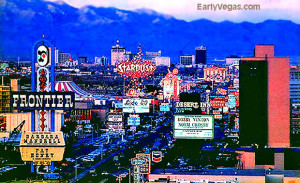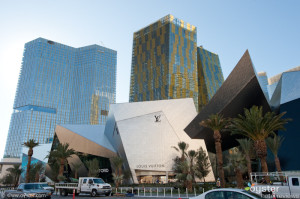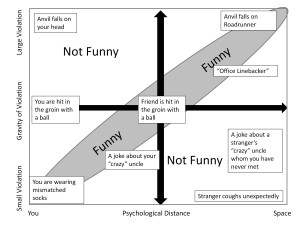Recently I traveled to Las Vegas for a bachelor party and every time I go it is always a completely different experience from my previous visits. The city has evolved quite rapidly from my first visit almost 10 years ago and what has fascinated me about the place is that this city has consistently been one of the most visited cities in the USA over the last 40 years and throughout this time frame it has successfully shifted the demographic to which it caters its message many times.
Just as companies compete for the affection and portion of customer’s wallets , so do cities, regions, and nations compete for visitors or residents to come and spend their money. In examining areas around the globe, it is readily visible that some are very successful at conveying their message, while others are not quite so. How has Las Vegas done this successfully while other cities (such as Toronto) fail to establish a brand with a consistent message?
Same Identity, Different Audience
Las Vegas has been built on casinos and gambling, and has had a mystique for visitors as a place where anything can happen. Until the end of the 1980’s, Vegas was essentially a place to escape one’s reality and do things that one cannot do back home. Sin City.
(Las Vegas Strip 1980)
In the early 1990’s however, resort operators saw an opportunity to target an untapped market: families. The result: many family-themed resorts opened up with water and theme parks, along with kid-friendly shows and entertainment. Las Vegas transformed into a place where a family could have fun at every opportunity and in every which way. Despite the shift to a very different target audience, tourism continued to boom, reaching 36 million visitors per year by the year 2000[1], up 53% from 1993[2].
(Las Vegas Strip 1990’s)
Nevertheless, at issue was the fact that these families were not spending money gambling[3] – the fundamental activity that was funding Las Vegas. As a result, resorts began to shift away from the family theme and focus on the “Adult Playground”, developing the tagline “What happens in Vegas stays in Vegas”. Importantly, this shift did not involve reverting back to the days of Sin City, as the focus now includes lavish parties, fine dining and extravagant shows, as well as gambling. Las Vegas is now more than just a place for sin, it is a place of extravagance and opulence.
(Las Vegas City Center today)
Throughout these three phases of Las Vegas’ past, it seems as though the method of delivery and the catered audience has changed over time. So how has this not created confusion for tourists that visit? Well, at its core, Las Vegas has always been able to do one thing better than any other city in the Western Hemisphere: provide everything in excess. Whether it’s gambling and prostitution, theme parks and playgrounds, or pool parties and fine dining, Las Vegas has always delivered in excess – they provide more of everything than anyone else. Further, Las Vegas does not deliver conflicting messages, trying to be all things to all people in its advertising. When the tagline “What happens in Vegas stays in Vegas” was adopted, this message transcended all forms of media including: commercials, billboards, travel magazines, movies (The Hangover), blogs, and editorials.
What Can Places Learn From Las Vegas?
In my opinion, Las Vegas has been able to succeed as a magnet for tourist dollars because it has done the following things successfully:
1) It has a unique value proposition that goes beyond the services they deliver. Las Vegas is no longer simply a gambling town, or family vacation spot, or an adult playground – it is a city that represents excess.
2) It delivers one consistent message to its audience and does not try to cater to multiple customer groups at a time. When Las Vegas focused on families, they focused on families, and when they wanted to deliver the “Adult Playground” message, they focused on solely that message.
3) A high degree of cooperation exists between the major stakeholders in the tourism industry (resort operators, municipal and state government) in order to ensure consistent delivery of the value proposition with the customer at every interaction point.
In my next post I will examine a city that has struggled to forge an identity and provide some ideas as to how it can begin to showcase itself using the template provided by Las Vegas. In the meantime, what are your thoughts on the Las Vegas brand? Are there other cities that come to mind that have been even more successful at branding themselves?
[1] McCallister, Eden, “The Shifting of the Las Vegas Tourism Industry: A Historical Perspective on Management and Resort Revenues” (2012). UNLV Theses/Dissertations/Professional Papers/Capstones. Paper 1472.
[2] Akinsete, Joseph, “Las Vegas visitor demographics: Be Careful what you wish for” (2010). UNLV Theses/Dissertations/Profeffional Papers/Capstones. Paper 594.
[3] Ibid.






 Home
Home